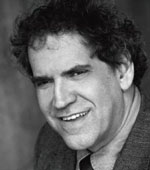By Rabbi Michael Leo Samuel

CHULA VISTA, California–Hassidic literature teaches that one of the reasons given for Hassidim swaying in prayer is based upon the analogy of the movement that occurs in the act of love making. Prayer is like “making love to the Shekhinah.” The Baal Shem Tov is purported to have taught:
- Prayer is zivug (coupling) with the Shechinah.’ Just as there is motion at the beginning of coupling, so, too, one must move (sway) at the beginning of prayer. Thereafter one can stand still, without motion, attached to the Shechinah with great deveikut (“cleaving to God) As a result of your swaying, you can attain great bestirment. For you think to yourself: “Why do I move myself? Presumably it is because the Shechinah surely stands before me.” This will effect in you a state of great hitlahavut (enthusiasm; rapture). [1]
This morning I saw a picture of three Hassidic Jews praying in front of a Victoria’s Secret lingerie store [2] that made me think about this teaching. Yes, these men certainly seemed devout and seriously engaged in prayer. I would imagine that these Hasidim probably felt they needed some visual aid to have this type of experience and close encounter as described by the Baal Shem Tov. [Incidentally, this type of erotic/mystical teaching has very strong Sabbatean quality. The false Messiah Shabbatai Tzvi (1626-1672) was famous for his free love and ritual fornication, incestuous sexual relations and ritual orgies that he and his followers had during the Purim holidays.]
Any normal person watching this spectacle might wonder: Are these Hassidim so lost in prayer that they are totally oblivious to their environment?
The answer is simple: They are much more consciously aware of where they are praying. According to the psychologist Carl Jung, such behavior represents the shadow archetype.
As defined by Jung, the archetype of the “shadow” represents the hidden or unconscious aspects of oneself—both good and bad—which the ego either represses or never recognizes, as he notes, “The shadow is the thing a person has no wish to be.”[3] The more unaware we are about this darker and amoral side, the less likely we will mindfully confront and change our inner nature. To become self-aware, it is imperative that each of us find a way to integrate our “shadow” nature. This spiritual and psychological task is not without its challenges and difficulties, as Jung explains further:
- The shadow is a moral problem that challenges the whole ego-personality, for no one can become conscious of the shadow without considerable moral effort. To become conscious of it involves recognizing the darker aspects of the personality as present and real. This act is the real existential condition for any kind of self-knowledge, and therefore, as a rule, meets with considerable resistance.[4]
An extreme example of shadow archetype can be seen in Robert Louis Stevenson’s story of Dr. Jekyll and Mr. Hyde. In this classic narrative, Dr. Jekyll, considers himself to be a kind, loving, and accepting doctor; yet he remains dishonest in facing himself as he really is. Little does he realize that there are two men who inhabit the same body and personality. At first, he changes in order to indulge in all the forbidden pleasures that were off-limits to Dr. Jekyll, but as his evil side progressively grows stronger, it is Hyde who dominates, until he is totally transformed into the Hyde persona. Had Jekyll been aware of the contradictions in his inner self, he might have been more capable of domesticating his inner savage.
The Hasidim are as oblivious as Dr. Jekyll was to his Mr. Hyde persona.
With respect to the Hassidic Jews praying in front of the Victoria’s Secret lingerie store, they really believe that the world is not observing. They behave like a young child who covers his ears and screams, thinking that nobody around him can hear him. The philosopher Emmanuel Levinas once said that an outsider can see more of our face than we will ever be able to see without the aid of a mirror. My friend Duncan Long (who happens to be a world famous artist) wrote me, “There is something terrifying in that it is a reflection of each of us and our inability to confront what others likely see so easily in us.”
How true!
Wisdom comes only with insight and a knowledge of our self.
================
Notes:
[1] Jacob I. Schochet, Tzavat HaRivash (Brooklyn, NY: Kehot Publication, 1998), pp.54-55.
[3] Carl Gustav Jung, “Aion: Researches into the Phenomenology of the Self” The Collective Works of C.G. Jung, Vol. 9 Part II (Princeton, NJ: Bollingen, 1959), 14.
[4] Carl G. Jung, Aion: Researches into the Phenomenology of the Self, op. cit.
*
Rabbi Michael Leo Samuel is spiritual leader of Temple Beth Shalom in Chula Vista. He may be contacted via michael.samuel@sdjewishworld.com
Is this considered an appropriate gesture to praise Hashem at the Western Wall of the temple? I was taught the Shekinah was Hashem’s glory.
Shalom